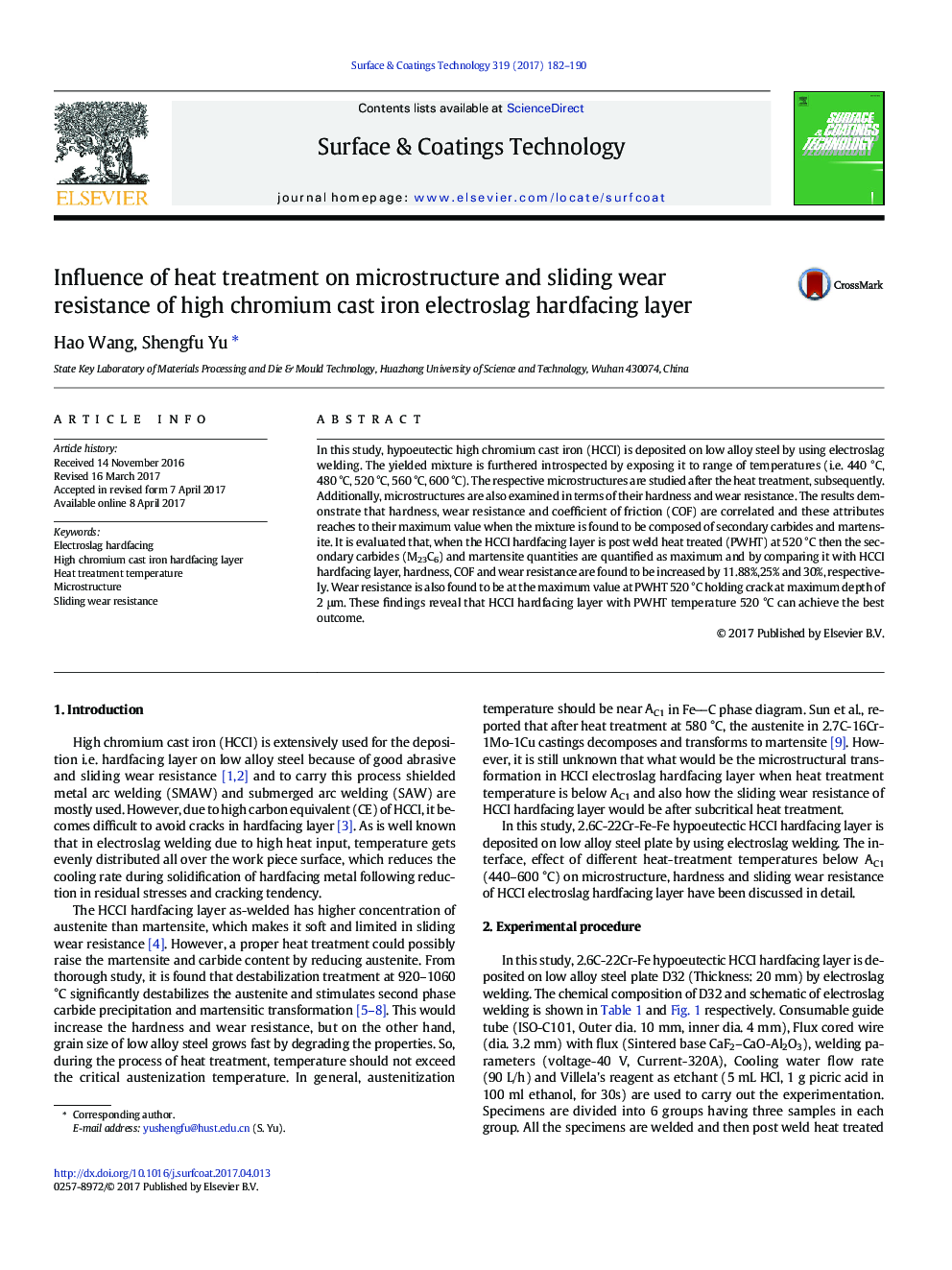| Article ID | Journal | Published Year | Pages | File Type |
|---|---|---|---|---|
| 5465383 | Surface and Coatings Technology | 2017 | 9 Pages |
â¢A method of electroslag welding for HCCI hardfacing is proposed.â¢M23C6 precipitation and austenite-martensite phase transformation harden the hardfacing layer.â¢The wear rate increases and then decreases with the heat treatment temperature increasing between 440 ~ 600°C.â¢HCCI electroslag hardfacing metal heat-treated at 520°C presents better wear resistance.
In this study, hypoeutectic high chromium cast iron (HCCI) is deposited on low alloy steel by using electroslag welding. The yielded mixture is furthered introspected by exposing it to range of temperatures (i.e. 440 °C, 480 °C, 520 °C, 560 °C, 600 °C). The respective microstructures are studied after the heat treatment, subsequently. Additionally, microstructures are also examined in terms of their hardness and wear resistance. The results demonstrate that hardness, wear resistance and coefficient of friction (COF) are correlated and these attributes reaches to their maximum value when the mixture is found to be composed of secondary carbides and martensite. It is evaluated that, when the HCCI hardfacing layer is post weld heat treated (PWHT) at 520 °C then the secondary carbides (M23C6) and martensite quantities are quantified as maximum and by comparing it with HCCI hardfacing layer, hardness, COF and wear resistance are found to be increased by 11.88%,25% and 30%, respectively. Wear resistance is also found to be at the maximum value at PWHT 520 °C holding crack at maximum depth of 2 μm. These findings reveal that HCCI hardfacing layer with PWHT temperature 520 °C can achieve the best outcome.
